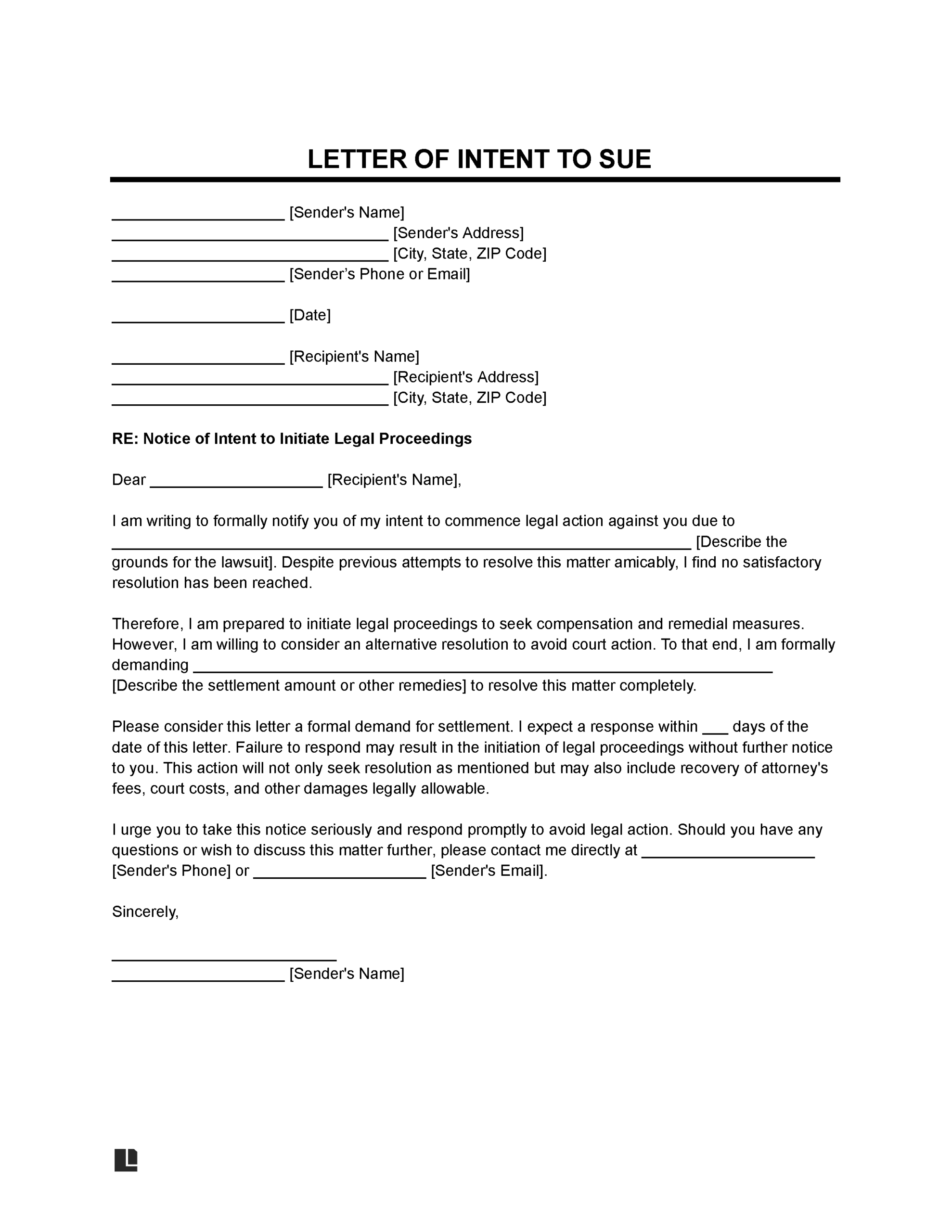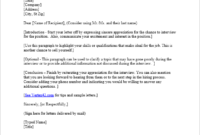Navigating a dispute can be an incredibly stressful experience, especially when you feel your only recourse might be legal action. Before you even think about stepping into a courtroom, there’s a powerful, often overlooked tool that can help resolve conflicts: an intent to sue letter. This formal document serves as a clear signal that you are serious about your claim and are prepared to take legal steps if a satisfactory resolution isn’t reached. It’s a critical first step that can sometimes prevent lengthy and costly litigation, opening the door for negotiation and settlement.
Understanding how to properly craft such a letter is essential, as its effectiveness lies in its clarity, firmness, and legal accuracy. While the idea of drafting a legal document might seem daunting, it doesn’t have to be. Many people find immense value in using an intent to sue letter template as a foundational guide. This article will walk you through what these letters entail, why they are so important, and how you can effectively use a template to prepare your own.
What Is An Intent To Sue Letter And Why Send One?
An intent to sue letter, often referred to as a demand letter, is a formal written communication sent by one party (the claimant) to another (the defendant) informing them of an existing dispute and the claimant’s intention to file a lawsuit if the matter is not resolved amicably within a specified timeframe. It’s not merely a threat, but a structured attempt to resolve a conflict outside of court, outlining the nature of the grievance, the relief sought, and the consequences of inaction.
Sending such a letter offers several significant advantages. Firstly, it demonstrates your seriousness and commitment to pursuing your claim, which can often prompt the recipient to take the matter more seriously than previous informal communications. Secondly, it provides a clear record of your attempt to resolve the dispute, which can be beneficial if the case eventually goes to court. Courts often look favorably upon parties who have made good faith efforts to settle a dispute before burdening the judicial system. Lastly, it can be a surprisingly effective way to open a line of communication, leading to negotiation and potentially a mutually agreeable settlement, saving both parties time, money, and emotional strain.
This type of letter is particularly useful in various scenarios. For instance, if you’re dealing with a breach of contract, where one party failed to uphold their end of an agreement, or if you’re seeking repayment for a significant unpaid debt. It’s also commonly used in personal injury cases where compensation is sought for damages, or in disputes over property damage where the responsible party is refusing to pay for repairs. In essence, whenever there’s a clear dispute and a party believes they are owed something, an intent to sue letter can be the crucial first step.

Moreover, in some jurisdictions or under specific contractual agreements, sending an intent to sue letter or a similar demand letter might even be a prerequisite before a lawsuit can be officially filed. This is because it serves as formal notice, giving the other party an opportunity to remedy the situation or negotiate. Ignoring this step could potentially lead to delays or complications in future legal proceedings. Therefore, understanding its purpose and correctly deploying it is not just strategic, but sometimes legally necessary.
Key Elements To Include In Your Letter
Crafting Your Own Intent To Sue Letter Using A Template
While the concept of an intent to sue letter might seem complex, creating one becomes far more manageable when you utilize an intent to sue letter template. These templates provide a structured framework, ensuring you don’t miss any critical legal components or essential details. Think of it as a blueprint for your specific situation. However, it’s crucial to understand that a template is merely a starting point; it’s designed to be customized extensively to fit the unique facts and circumstances of your particular dispute. Simply filling in the blanks without fully understanding the implications or ensuring accuracy could undermine its effectiveness.
The process typically begins by selecting a reputable template that aligns with the general nature of your dispute. Once you have your chosen intent to sue letter template, the next vital step is to meticulously gather all supporting documentation related to your claim. This includes contracts, invoices, photographs, emails, text messages, witness statements, and any other evidence that substantiates your allegations and the damages you’ve incurred. These documents not only help you accurately fill in the template but also serve as powerful attachments or references within the letter, lending credibility and strength to your claim.
When you’re ready to start customizing, focus on clarity and precision. Every detail you insert into the intent to sue letter template should be factually accurate and presented in a professional, firm, yet non-emotional tone. Avoid hyperbole or personal attacks; stick strictly to the facts of the dispute and the legal basis for your claim. Clearly articulate the exact nature of the damage or loss, the specific amount of money or action you are demanding, and the deadline for their response. Remember, the goal is to persuade the other party to resolve the issue, not to escalate hostilities unnecessarily.
After completing your draft, it’s highly advisable to proofread it carefully for any grammatical errors or typos. Better yet, have a trusted friend or colleague review it for clarity and accuracy from an objective perspective. Even more importantly, before sending such a significant document, it is always recommended to seek legal advice. A qualified attorney can review your customized letter, ensure it complies with local laws, and advise you on the best course of action, which could save you considerable trouble down the line. They can also help you understand the potential outcomes and prepare you for the next steps, whether that involves negotiation or actual litigation.
The power of a well-crafted letter of intent to sue lies in its ability to serve as a strong, formal demand, often spurring the recipient into action before court becomes necessary. It opens a formal channel for resolution, signaling that you are serious about pursuing your rights. By carefully preparing and customizing an intent to sue letter template, you position yourself to either resolve your dispute amicably or to proceed with a lawsuit from a position of strength, armed with a clear record of your efforts.
Ultimately, the aim is to resolve conflicts efficiently and effectively, ideally without the need for court intervention. An intent to sue letter stands as a powerful testament to your commitment to achieving a fair outcome. By leveraging a reliable intent to sue letter template and carefully tailoring it to your specific situation, you equip yourself with a professional and legally sound document that can make all the difference in achieving a favorable resolution to your dispute.



